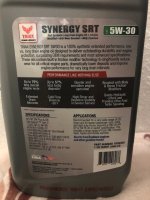https://www.amsoil.com/t/faq/ scroll down to the bottom to the API approval section.
https://www.redlineoil.com/Content/files/tech/0W30_MO_PROD_INFO_2020.pdf "Recommended for" can you see any actual approval?
I was pointing out that the Redline facility was not much different than the Triax location shown on Google maps. Just basically a warehouse, so from outside appearances there is no difference.
TriaxLubes having a name on this site was mentioned, and I was able to look them up.
Renewable Lubes was recommended to me by a tribologist, they have no approvals either.
If VOAs and UOAs are not a judge of oil quality, then what is? Being approved by an agency? We are on here to find better oils through independent research, including how well they operate in an engine. If a blender or producer does not pay the fee for licensing because of cost, or restriction on using better formulas, and passes on the savings through lower pricing, then why not use it? We have no guarantee that it's not re-refined cat piss, but the analyses should bear that out.
Yes some Amsoil products are approved, but the higher end (expensive) products are not.
Redline focuses on racing, so longevity is not a priority, but they are highly touted so their product sells well. I couldn't justify spending that much on oil that an analysis condemned after 4,000 miles.
Triax is not that expensive, but with a lower base number won't hold up very long, so it's affordable for shorter OCI.


